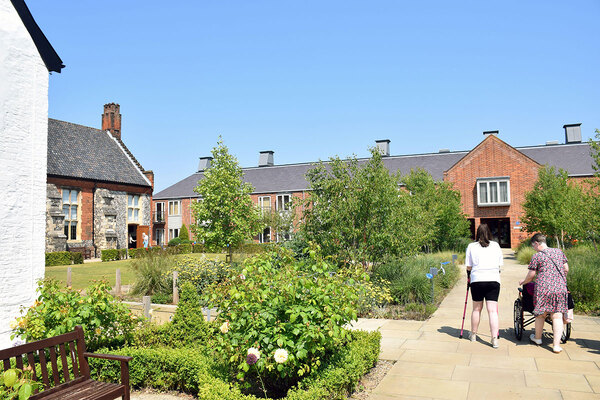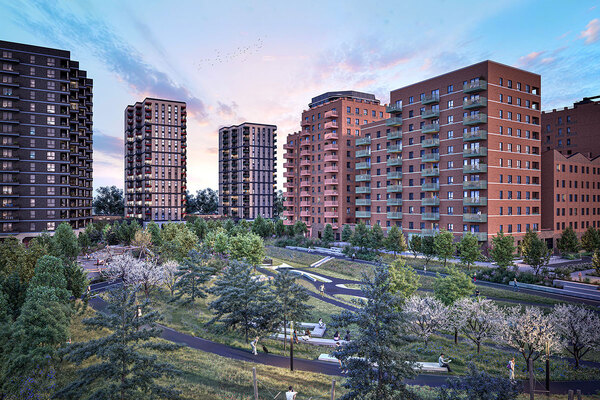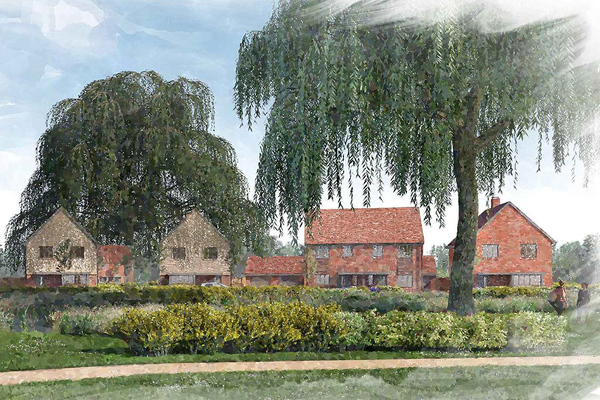Accessible homes can help drive health equity and national growth
Accessible housing could help not only disabled people but also the public purse, argues Nick Apetroaie, chief executive of Habinteg

One area of health inequality that drives my day-to-day work at Habinteg is the experience of housing for disabled people. As CEO of Habinteg, I lead a team who work tirelessly to deliver improvements for our tenants all over England, around two-thirds of whom are disabled.
So I read with interest earlier this month the Institute for Public Policy Research’s (IPPR) third report from its high-profile Commission on Health and Prosperity, which highlights the significant health inequalities in the UK. They are among the highest of any advanced economy.
Its interim recommendations are to create a network of good health zones focusing on seven key areas, including physical and mental health and housing quality.
The report reveals that accessible homes, which enable independent living, contribute £3,000 worth of savings for the NHS and social care per property per year.
This is further supported by the report Habinteg released last year with the Housing and Communities Research Group at the London School of Economics and Political Science, Living not existing: The economic and social value of wheelchair user homes, which showed that wheelchair-accessible housing could save the household and the public purse around £94,000 per person over 10 years.
This puts into financial terms what disabled people have been saying for some time – that accessible housing is the key to greater independence, health and well-being and can be pivotal in gaining and maintaining employment.
At the end of last year, the Department for Levelling Up, Housing and Communities held further sessions of its residents panel. At these sessions disabled residents spoke about not being able to get in and out of their homes or wash themselves properly due to a lack of accessible facilities.
“Some members of the panel reported being told they would have to move to a property that could be adapted in order for their needs to be met”
Some members of the panel reported being told they would have to move to a property that could be adapted in order for their needs to be met, and their suggested improvements included making the design of social housing better.
Currently, the Levelling Up, Housing and Communities Committee is conducting an inquiry to examine the role of government, local councils and developers in ensuring the delivery of suitable housing for disabled people. The time is right for the government to act.
From speaking to tenants up and down the country, it’s clear to me what a profound difference an accessible home can make for a disabled person and their family. It’s an area where there are clear policy changes that could be made to the planning system to deliver substantial improvements in the lives of many disabled people.
With 45% of people over 65 and 58% of people over 80 having a disability, all of us would benefit from more accessible housing.
At Habinteg, we believe there is more than a moral duty to build a more inclusive society where the health and well-being of everyone is protected. The costs associated with poor health are high and growing, with government estimating these at around £100bn a year. The value for money case for accessible housing is clear.
I was greatly encouraged in the summer of 2022 when, following the consultation on accessibility standards, the government committed to raising the baseline for all new homes to the M4(2) accessible and adaptable standard. This standard sets out key accessibility requirements, and allows homes to be easily and cheaply fitted with common adaptations such as stair lifts and grab rails.
“With 45% of people over 65 and 58% of people over 80 having a disability, all of us would benefit from more accessible housing”
This standard is not as comprehensive as the M4(3) standard for wheelchair-accessible homes. Yet having an M4(2) home would mean that should a person develop mobility problems, as will happen to most of us as we age, they will be able to stay more independent in their own home far longer.
Setting the M4(2) standard as the baseline for new homes won’t solve all the problems disabled people experience when seeking accessing housing (there would need to be a commitment to build a proportion of wheelchair-accessible housing M4(3) in each local authority area as well) but it would help to reduce demand on social care, speed up hospital discharge and reduce the adaptations bill for local authorities.
Raising the accessibility standard to M4(2) would be a start and would mean we finally stop building homes that exclude people and store up costly challenges for the future.
It’s concerning that 18 months after the government’s commitment to introduce M4(2) as the new baseline, we are no closer to that goal. It’s vital that government now engages with the sector to implement and enforce this new baseline.
Building safe, quality, inclusive and accessible homes is vital not only to our well-being but to the future success of the UK.
Sign up for our care and support newsletter

Already have an account? Click here to manage your newsletters







